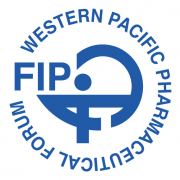Adolescents falling through gaps in HIV services
NOV ,25 2013
Reference :
http://www.who.int/mediacentre/news/releases/2013/hiv-adolescents-20131125/en/index.html
GENEVA – More than 2 million adolescents between the ages of 10 and 19 years are living with HIV, and many do not receive the care and support that they need to stay in good health and prevent transmission. In addition, millions more adolescents are at risk of infection.
The failure to support effective and acceptable HIV services for adolescents has resulted in a 50% increase in reported AIDS-related deaths in this group compared with the 30% decline seen in the general population from 2005 to 2012.
Addressing the specific needs of adolescents
The WHO recommendations “HIV and adolescents: Guidance for HIV testing and counselling and care for adolescents living with HIV” are the first to address the specific needs of adolescents both for those living with HIV as well as those who are at risk of infection. They are being released in advance of World AIDS Day 2013 (1 December).
“Adolescents face difficult and often confusing emotional and social pressures as they grow from children into adults,” says Dr Gottfried Hirnschall, Director of WHO HIV/AIDS Department. “Adolescents need health services and support, tailored to their needs. They are less likely than adults to be tested for HIV and often need more support than adults to help them maintain care and to stick to treatment.”
“Adolescents need health services and support, tailored to their needs. They are less likely than adults to be tested for HIV and often need more support than adults to help them maintain care and to stick to treatment.”
Dr Gottfried Hirnschall, Director of WHO HIV/AIDS Department
Across sub-Saharan Africa, many who were infected at birth are becoming adolescents. In addition to the many changes associated with adolescence, they also face the challenges of living with a chronic infection: disclosing the news to friends and family and preventing transmission to sexual partners.
“Adolescent girls, young men who have sex with men, those who inject drugs or are subject to sexual coercion and abuse are at highest risk. They face many barriers, including harsh laws, inequalities, stigma and discrimination which prevent them from accessing services that could test, prevent, and treat HIV,” says Craig McClure, Chief of HIV programmes for UNICEF. “About one-seventh of all new HIV infections occur during adolescence. Unless the barriers are removed, the dream of an AIDS-free generation will never be realized.”
Making it easier to know HIV status
Furthermore, many young people do not know their HIV status. For example, in sub-Saharan Africa, it is estimated that only 10% of young men and 15% of young women (15-24 years) know their HIV status and, in other regions, although data is scarce, access to HIV testing and counseling by vulnerable adolescents is consistently reported as being very low.
WHO recommends governments review their laws to make it easier for adolescents to obtain HIV testing without needing consent from their parents. The guidelines also suggest ways that health services can improve the quality of care and social support for adolescents. And they highlight the value of involving this age group to create an adolescent-centered approach to the services that work for people of their age.
Better equipping adolescents
“Young people need to be better equipped to manage their HIV infection and take ownership of their health care,” says Dr Elizabeth Mason, Director of WHO Maternal, Newborn, Child and Adolescent Health Department. “We have seen for example in Zimbabwe that, by developing adolescent friendly services, it is possible to achieve good treatment outcomes among adolescents. We urge others to be inspired by these examples.”
To help health workers put these recommendations into practice WHO has developed a new online tool which will be launched in January 2014. It uses practical examples from country programmes that are working closely with adolescents on HIV issues.
Note to editors
The guidelines provide recommendations and expert suggestions – mainly for policy-makers and national programme managers – on prioritizing, planning and providing HIV testing, counselling and care services for adolescents. Designed to be used with the recent WHO consolidated Antiretroviral guidelines, these new guidelines provide complimentary recommendations and guidance to support better provision of services to help adolescents remain in care and adhere to treatment.
The guidelines were developed based on scientific evidence, community consultations with adolescents and health workers, field experience of health workers and expert opinion. WHO led the development of these guidelines in collaboration with the United Nations Children’s Fund (UNICEF), the Global Network of People Living with HIV (GNP+), the United Nations Educational, Scientific and Cultural Organization (UNESCO), and the United Nations Population Fund (UNFPA).
